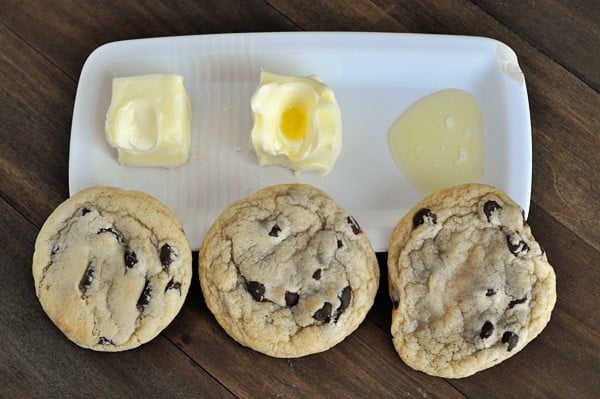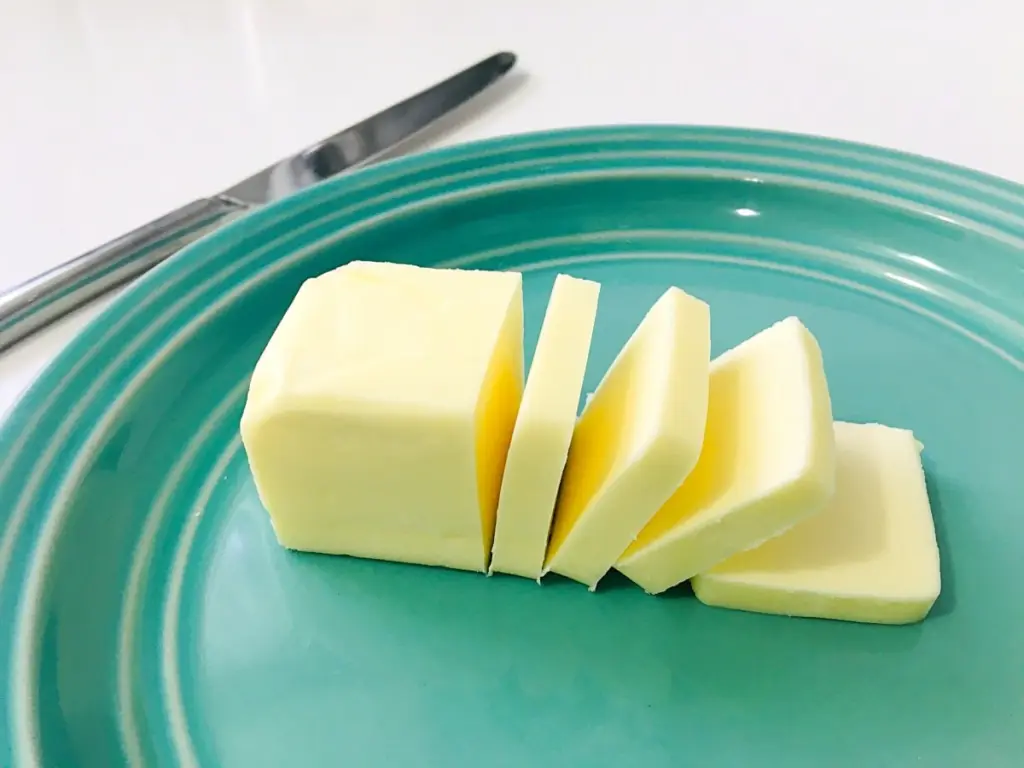Why Butter Temperature Matters in Different Baking Methods
Getting butter temperature right transforms your baking from mediocre to magnificent.
The difference between room temperature, cold, and melted butter determines whether your cookies spread perfectly, your pie crust flakes beautifully, or your cakes rise with ideal texture.
Understanding these temperature secrets gives you complete control over your baking results.


The Science Behind Butter Temperature
Butter consists of fat, water, and milk solids. Temperature changes how these components behave during mixing and baking.
At room temperature (65-70°F), butter becomes pliable yet maintains its structure. The fat crystals remain stable while allowing air incorporation during creaming.
Cold butter (straight from refrigerator) keeps fat crystals firm and separate. This prevents gluten development and creates layers in pastry dough.
Melted butter transforms into liquid fat that coats flour differently than solid butter. This creates denser, more tender baked goods with different textures entirely.
Creaming Method: Room Temperature Butter Rules

The creaming method requires room temperature butter for optimal results. This technique involves beating butter with sugar to create light, fluffy mixtures.
Room temperature butter traps air bubbles when beaten with sugar. These trapped air pockets expand during baking, creating lift and tender crumb structure in cakes and cookies.
Testing butter readiness takes seconds. Press your finger gently into the butter stick. Properly softened butter yields to pressure without melting or feeling greasy. The indentation should hold its shape while remaining smooth.
Your butter reaches perfect temperature when it bends without breaking. Too soft butter creates greasy, flat results. Too firm butter won’t incorporate air properly, leading to dense textures.
Creating Perfect Creamed Mixtures
Start creaming butter alone for 30 seconds before adding sugar. This preliminary step ensures uniform texture throughout the mixture.
Add sugar gradually while beating continuously. The sugar crystals cut through butter, creating tiny air pockets that lighten the mixture’s color and texture.
Cream for 3-5 minutes until the mixture appears pale yellow and notably fluffy. Proper creaming increases mixture volume by nearly half.
Stop occasionally to scrape bowl sides, ensuring even incorporation. Uneven mixing creates pockets of dense butter that affect final texture.
Cutting Method: Cold Butter Creates Flaky Layers

Pastry making demands cold butter for successful results. The cutting method involves incorporating cold butter pieces into flour without warming or melting the fat.
Cold butter creates steam pockets during baking. Water in butter turns to steam, pushing dough layers apart and creating flaky textures in pie crusts, biscuits, and scones.
Cut butter directly from refrigerator into small cubes before starting. Work quickly to prevent warming from hand heat or room temperature.
Mastering the Cutting Technique
Use pastry cutters, forks, or fingertips to break butter into flour. The goal involves creating butter pieces roughly the size of small peas throughout the mixture.
Work butter and flour together until mixture resembles coarse crumbs with visible butter flakes. These butter pieces create the signature flaky layers during baking.
Avoid overworking the mixture. Excessive handling warms butter and develops gluten, resulting in tough rather than tender pastries.
Add liquid ingredients last, mixing just until dough holds together. Overhydrated dough becomes sticky and difficult to handle.
Melting Method: Liquid Fat for Dense Textures

Melted butter creates entirely different baking results compared to solid butter methods. This technique produces moist, dense textures in muffins, quick breads, and brownies.
Melted butter coats flour particles completely, preventing gluten development. This creates tender crumb structures with rich, moist textures.
Cool melted butter slightly before adding to prevent cooking eggs or other temperature-sensitive ingredients. Butter should feel warm but not hot to touch.
Working with Melted Butter Successfully
Melt butter gently using low heat or microwave short intervals. Overheated butter separates, creating greasy textures in finished products.
Stir melted butter until smooth and uniform. Separated butter creates uneven fat distribution throughout batter.
Combine melted butter with other liquid ingredients before adding to dry ingredients. This prevents flour from forming lumps when mixed.
Mix batter just until ingredients combine. Overmixing develops gluten, creating tough textures despite using melted butter.
Temperature Troubleshooting for Common Problems
Cookies spreading too much indicates butter was too warm during creaming. Next time, ensure butter feels cool to touch while remaining pliable.
Dense cakes often result from butter that was too cold for proper creaming. Allow additional softening time or use gentle warming methods.
Tough pie crusts happen when butter warms during cutting method. Chill ingredients and work in cool kitchen environments.
Quick Temperature Fixes
Soften cold butter faster by cutting into small pieces and leaving at room temperature for 15-20 minutes. Smaller pieces warm more quickly than whole sticks.
Warm butter too quickly using gentle microwave intervals of 5-10 seconds. Check frequently to prevent melting.
Cool overly soft butter by refrigerating for 10-15 minutes. Monitor closely to prevent returning to completely firm state.
Emergency softening involves grating cold butter directly into mixing bowl. Grated butter reaches room temperature within minutes.
Temperature Testing Methods
The finger test works reliably for creaming method butter. Gentle pressure should create smooth indentations without butter sticking to fingers.
Visual cues help identify proper consistency. Room temperature butter appears slightly glossy with smooth surface texture.
Bending tests determine readiness without direct contact. Properly softened butter bends without cracking or breaking apart.
Professional Tips for Consistent Results
Plan ahead by removing butter from refrigerator 30-60 minutes before baking. Timing depends on kitchen temperature and butter quantity.
Cut butter into smaller pieces for faster, more even softening. Larger pieces soften unevenly, creating temperature variations.
Use butter at consistent temperatures for predictable results. Document successful temperatures for favorite recipes.
Consider kitchen temperature when planning butter preparation. Warm kitchens require less softening time than cool environments.
Seasonal Considerations
Summer baking requires extra attention to butter temperature. Warm kitchens can oversoften butter quickly, affecting texture results.
Winter kitchens may need longer softening times. Cold environments keep butter firmer longer than expected.
Air conditioning affects butter temperature stability. Monitor butter condition frequently in climate-controlled environments.
Humidity impacts butter behavior during mixing. High humidity can make butter feel softer than actual temperature indicates.
Understanding butter temperature transforms your baking success rate dramatically. Room temperature butter creates light, airy textures through proper creaming. Cold butter produces flaky, layered pastries when cut properly into flour. Melted butter delivers rich, dense results in quick breads and muffins. Master these three approaches and watch your baking confidence soar with consistently excellent results every single time.